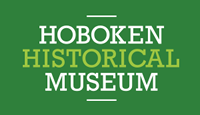Up and Down the River: A History of the Hudson, 1609–2009
March – December 2009

A hundred years ago, New York City threw a two-weeklong public celebration of a double anniversary: the tricentennial of Henry Hudson’s voyage up the river and the centennial (plus two) of Robert Fulton’s first successful steamboat crossing in 1807. One of the largest public anniversaries in the country’s history, offices and factories closed and the number of commuter trains doubled to handle the crowds for the banquets, parades, historical floats, theatrical performances, lectures, fireworks and an airplane flight by Wilbur Wright around the Statue of Liberty. Authentic recreations of Hudson’s ship the Half Moon and Fulton’s steamboat the Clermont participated in a U.S. Naval parade up the Hudson.
Up and Down the River: A History of the Hudson 1609 – 2009 joins many celebrations along both sides of the river during this historic quadricentennial year. The Museum’s exhibit, made possible through a special project grant from the New Jersey Historical Commission, extends through the end of the year to accommodate a full agenda of talks, events, educational programs and art celebrating our city’s relationship with the river that shaped its fortunes.
The exhibition and lecture series will trace the important roles the river has played in the life of the Mile Square City: Providing food and commerce to the area’s first inhabitants, the Lenape Indians; Connecting 19th century New Yorkers and sailing enthusiasts to the Hoboken shoreline during its incarnation as a resort called “Elysian Fields” and home of the cup-winning yacht America; bringing to its piers the grand passenger ships from Europe and later a bustling cargo trade, as depicted in the film On the Waterfront; inspiring generations of students and professors at the Stevens Institute of Technology to contribute to the legacy of groundbreaking maritime research; and providing recreational activities along miles of New Jersey waterfront walkway, thanks to the advocacy of citizen activists.
Though Robert Fulton gets credit for inventing the first steam-driven ferry, Hoboken founder Colonel John Stevens and his son Robert, both prolific inventors, were tinkering at the same time with a steam engine and a screw propeller on a ferryboat. In 1811 Stevens launched the first steam-powered commercial ferry service to cross the Hudson. Fulton’s designs and a biography of the inventor and others who were instrumental in helping him develop and refine his steam engine will covered.
For the exhibition, the Museum commissioned an original mural of the outline of Hoboken’s waterfront along the entire length of the main wall, painted by local artist Ray Guzman. Scale models of vessels from the Hudson River are on display, including New York Central Tug #18 by John Marinovich, and excerpts from Hudson’s first mate’s journal describe the first encounters between the Europeans and native inhabitants. A portion of the exhibit features memorabilia from the 1909 Hudson-Fulton celebration. Items on display come from the Museum’s own collections, as well as from the private collections of a Hudson County-based model shipmaker, the South Street Seaport Museum, Stevens Institute of Technology and the Bayonne Historical Society.
